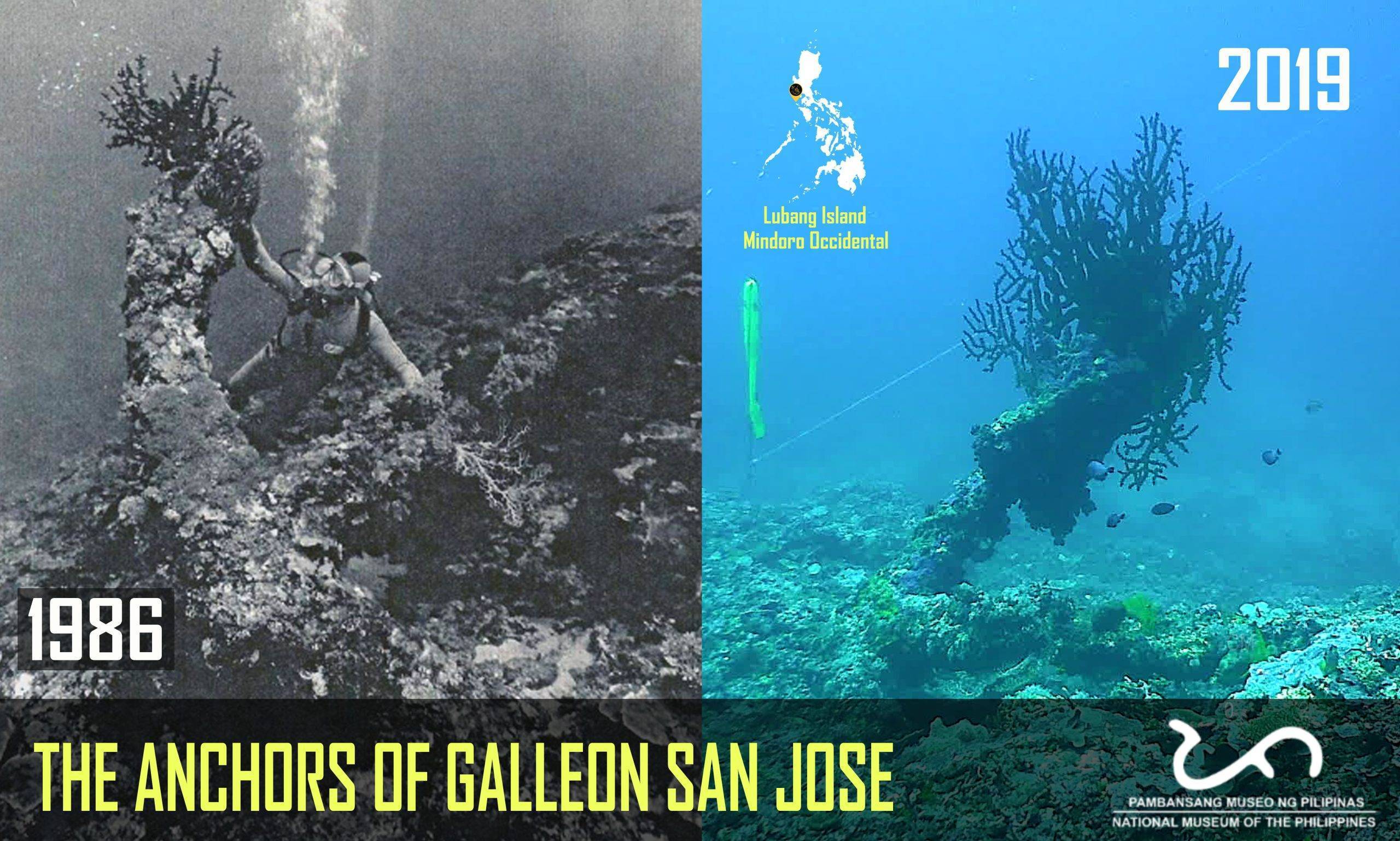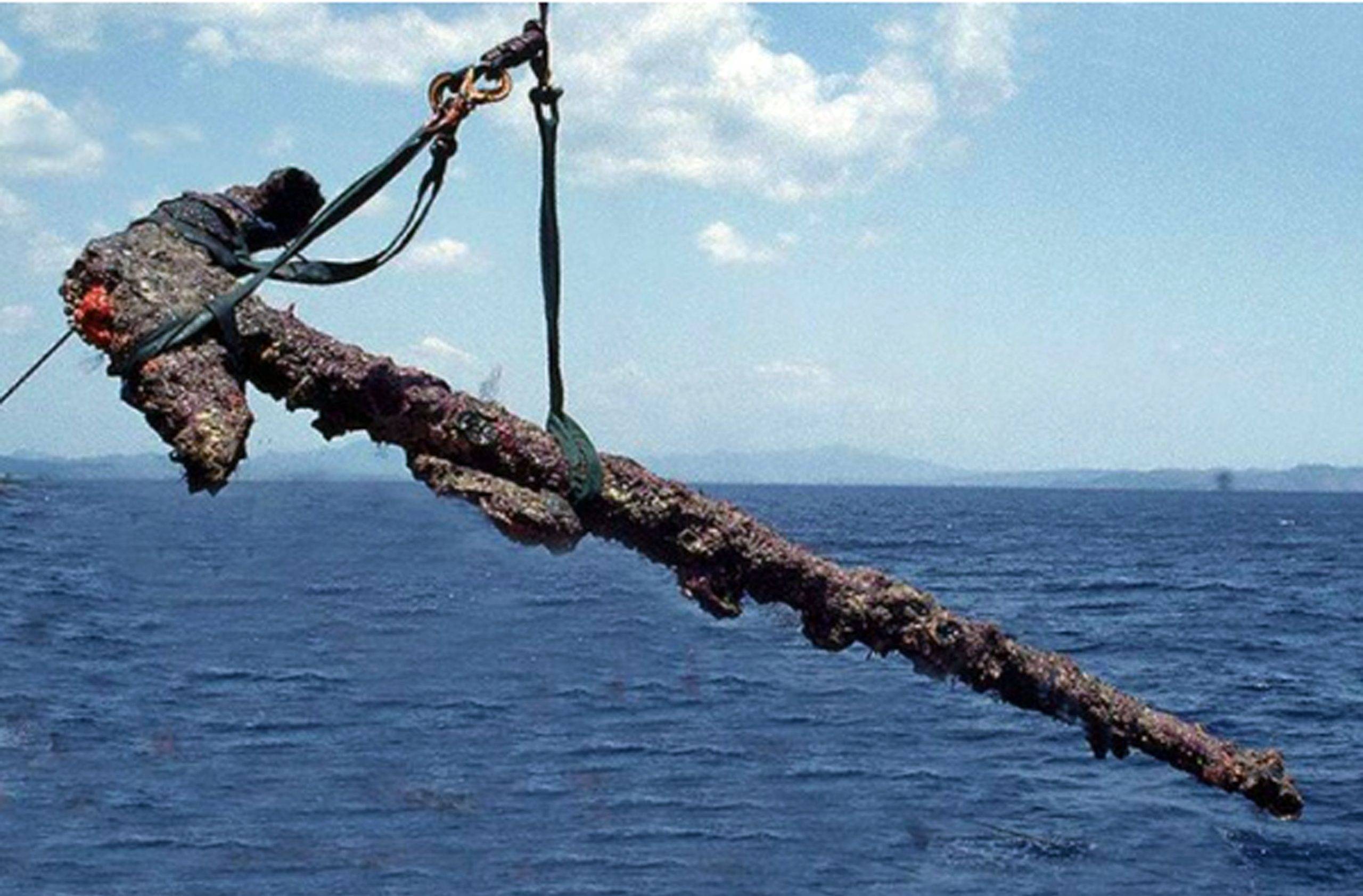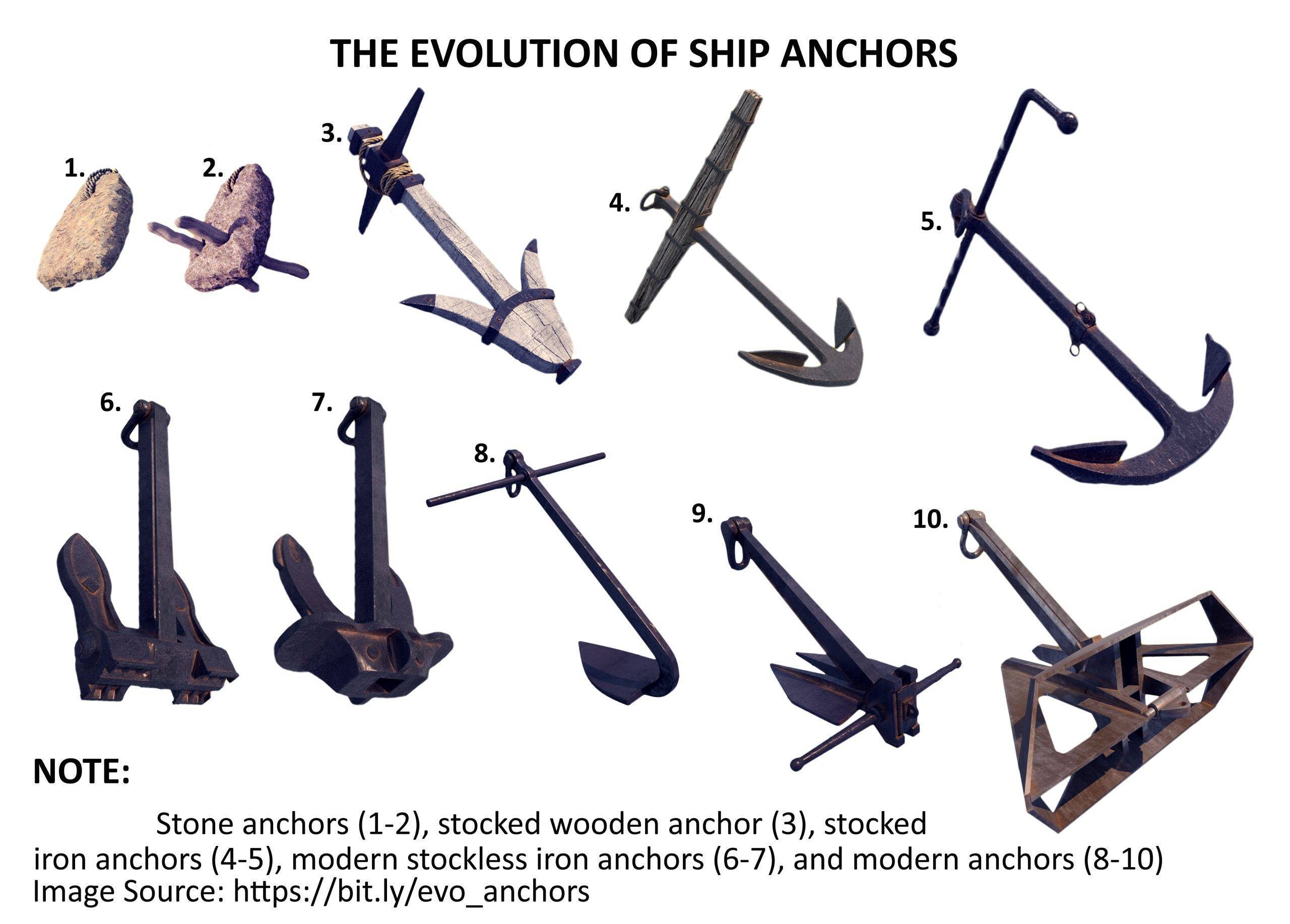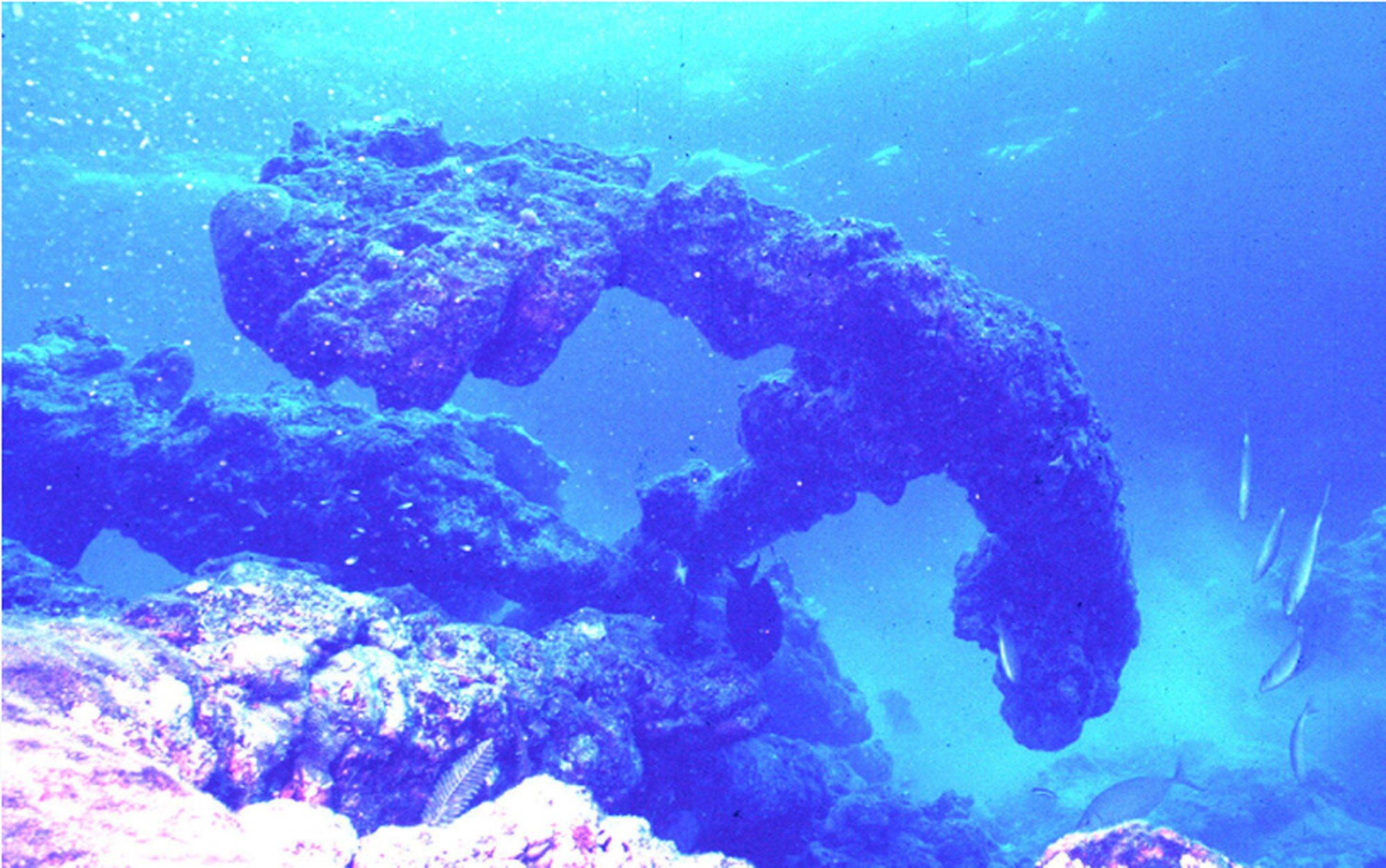The anchors of the galleon San Jose
The anchors of the galleon San Jose
-

Left image © G. Fournier 1986, right image © R. Savoye 2019
-

Similar anchor was also recovered from the Spanish galleon San Diego in 1992. Image Source: https://www.gilbert-fournier.com/ancres © G. Fournier 1992
-

-

Similar anchors were also recorded from the East India Company, the Earl Temple shipwreck in Pag-asa Island. Image Source: https://www.gilbert-fournier.com/ancres, © G. Fournier 1996
This week’s #MaritimeMonday presents the anchors of the galleon San Jose. This Manila galleon got stuck on a reef in Looc Bay on the southeast part of Lubang Island, Mindoro Occidental, while trying to seek refuge from a storm. It eventually sank along with 400 crew and more than 12,000 cargo in 1694.
Prior to the Bronze Age of Europe (c. 2500–7750 Before Common Era), seafarers already used massive stones with holes to anchor their vessels at sea and to avoid being driven by the wind or tide. Old anchors were made of wood, including the shank, the arms, and the crown. Modern anchors, on the other hand, are heavily forged or cast in iron and shaped to grip the sea bottom. Using a cable or rope, anchors also hold a ship or other floating structure in the desired position, regardless of wind and current.
The archaeological excavations of San Jose in 1986 by the Underwater Archaeology Section of the #NationalMuseumPH in collaboration with the World Wide First (WWF) led to the recovery of hundreds of ceramic materials (porcelain, stoneware, earthenware), crumpled lead sheets, glass buttons, copper rings, bronze, cannonballs, musket balls and other metal implements, iron slags, and pits of implements. An anchor was also discovered underwater at approximately 36 m below sea surface level. Based on its huge size, it could be one of the main anchors, or could have an accompanying bower anchor.
San Jose was the largest Spanish galleon ever built during its time, measuring approximately 60 m long. Most Spanish galleons used at least two or more main or bower anchors depending on the ship’s tonnage, augmented by secondary anchors such as sheet and/or kedge anchors. During the exploration of the #NationalMuseumPH and the Far Eastern Foundation for Nautical Archaeology (FEFNA) in October to November 2019, several broken ceramic pieces, 4 intact miniature bottles, and other metal implements were collected. Interestingly, another anchor was discovered, smaller than the one recovered during the 1986 excavation. This was probably a sheet or a kedge anchor.
Your #NationalMuseumPH is now open to the public. You may see the newly installed ‘300 Years of Maritime Trade in the Philippines’ exhibition at the 2nd floor hallway gallery of the National Museum of Anthropology. To schedule your visit, click on ‘Book A Tour’ on this website. Remember to #KeepSafe by practicing minimum health protocols while viewing our galleries. You may also experience the virtual tour of the exhibit by clicking on this link: https://tinyurl.com/300YearsOfMaritimeTradePH
#Anchor
#SanJoseShipwreck
#MuseumFromHome
#StaySafeStayHome
#BeatCOVID19
Poster and text by the Maritime and Underwater Cultural Heritage Division
© National Museum of the Philippines (2021)








